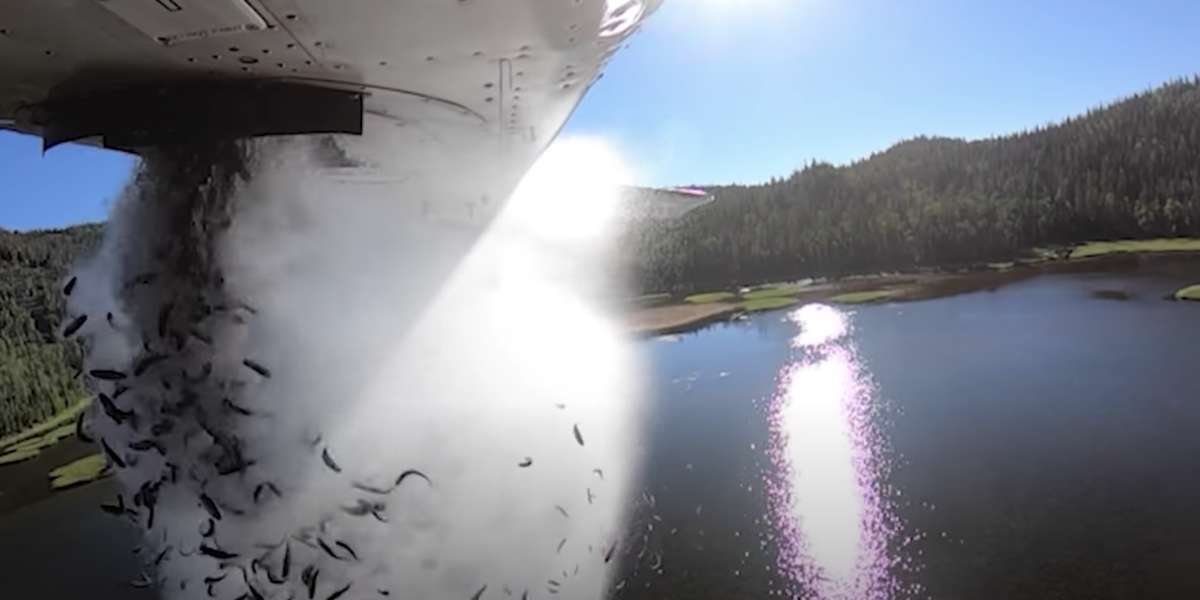
Watch This Wild Video of Aerial Fish Restocking Over Utah’s Alpine Lakes
On average, approximately 95 to 99 percent of the dropped fish survive.

Screengrab via Utah DW

Who knew fish could skydive? That’s what appears to be happening to the unfamiliar eye in a wild video—one replete with an adventurous soundtrack—released this month by the Utah Division of Wildlife Resources.
Pilots for the Utah department recently employed the “preferred” airborne restocking tactic of dropping thousands of wriggling friends into approximately 200 of the state’s more inaccessible alpine lakes, where, according to the Utah department, prolonged ground transport can render dangerously low oxygen levels for fish.
On average, approximately 95 to 99 percent of the dropped fish survive, department officials estimated, adding that aerial fish drops have been practiced for decades. Due to the light weight of the fish, which range in length between 1 and 3 inches, “they flutter down slowly to the water” in a similar manner as leaves from a tree, according to the department’s Facebook page.
“Post-stocking netting surveys show that survival of aerial-stocked fish is incredibly high,” the post says. “The airplane holds hundreds of pounds of water and can drop 35,000 fish in a single flight without reloading.”
This month’s drops, which were highlighted by numerous species of trout, sunfish, and splake, are common in higher elevation states like Colorado, Montana, and Wyoming.
“If you see flying fish at Utah’s remote waters, don’t be alarmed,” the video notes. “We used to load fish into milk cans and we needed horses to get us into these remote areas. The aerial method of stocking is much quicker and less stressful for the fish. We’ve had success stocking fish into mountain lakes like this since the 1950s!”
Watch the video below.
